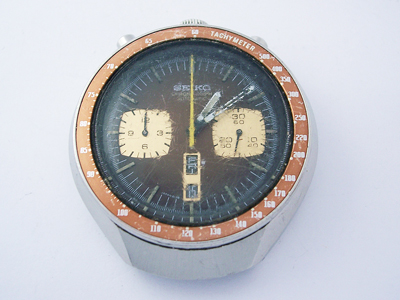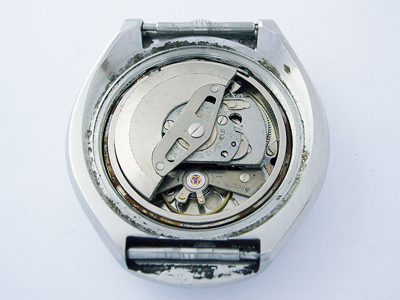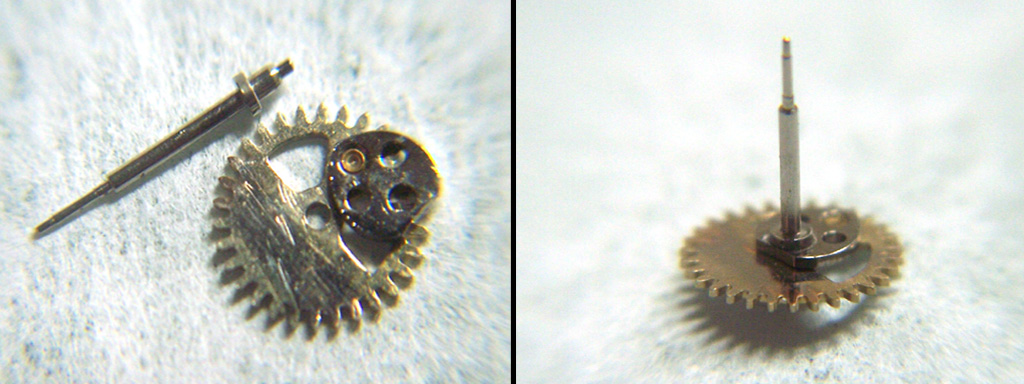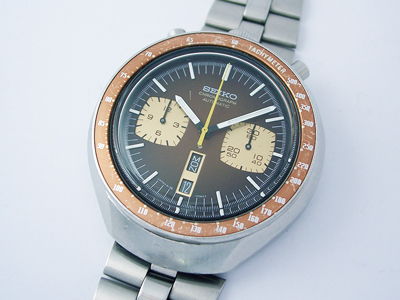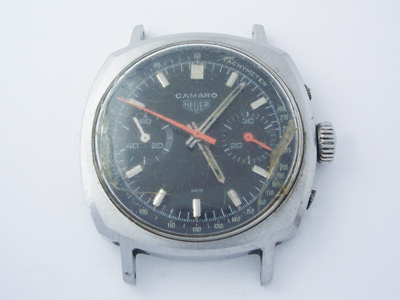Amazingly, more than fifteen years have passed since I wrote about a Seiko Bullhead on the blog, so let’s have a look at this one.
(Click pictures to enlarge)
Seiko’s Bullhead chronograph has always been an iconic model and increasingly so in modern times. Values of these watches have increased significantly over the years and all original examples continue to be sought after by Seiko collectors.
When I first wrote about a Seiko Bullhead on the blog way back in 2008, I’d bought two of them in a single deal, both non-runners (that post here.) Checking my notes now, I paid the princely sum of just £118 for the pair… Wow! Where’s that time machine?! I decided to sell both of them on in the interim, but then hindsight is a wonderful thing.
The popularity of Bullhead watches in general saw a significant boost in 2019 when Brad Pitt wore a Citizen 8110 Bullhead, with a similar vintage vibe, in the Tarantino movie ‘Once Upon a Time in Hollywood’. (On a side note, the film was set in 1969 and the first Citizen Bullhead wasn’t produced until 1972, but hey, only a few watch-nerds like me would have spotted that. 🙂 )
Now owned by the son of a former colliery worker, the subject of this post found its way to me for potential restoration after exploring several other avenues. As is evident in the picture above, having spent most of its working life down the coal mines of West Yorkshire, the watch had seen quite a lot of action.
Although the watch was running, the reset pusher was jammed in, disabling the chronograph and the mineral crystal was scratched to the point of making the date almost illegible. Thankfully, as the crystal protrudes above the bezel by quite a margin on this model, it had protected the original insert from too much damage.
Parts for the cal. 6138 chronographs are becoming increasingly hard to source (especially the centre chronograph wheel), so with the hands and dial markers showing obvious signs of moisture ingress, I was pleased to find that the movement wasn’t too bad – scruffy, but serviceable.
With the watch removed from the case, the true condition of the dial and hands was revealed…
As you can see, the hands were in particularly poor shape, missing lume and sections of paint, the dial markers too had all darkened. There was a small scratch in the upper left sector of the dial, which is a shame, and a strange blob of something next to the day aperture. Could that be removed?
Servicing of the movement proved to be quite straight forward, though it did suffer from two common issues with the 6138 calibre, the first being ‘hour register creep’, where the hour hand in the subdial creeps forward even when the chronograph is disengaged and the second being separation of the minute register wheel, which is surprisingly common.
With these issues addressed and the rest of the service work completed, I could turn my attention to the cosmetic issues. The hour and minute hands were stripped, repainted and relumed and the dial markers too were restored to match. Thankfully, the mysterious blob on the dial responded favourably to a careful soaking and I was able to remove all traces of it, which was a bonus.
Finally, the case was disassembled and cleaned, and a new crystal and full gasket set installed to bring this one back to life.
As a final note, the owner told me that his Father didn’t buy this watch, he actually swapped it in the late 1970’s for three clay pipes he’d found down a mineshaft at Newmarket Colliery (Wakefield).
Given that the watch would have been just a few years old at the time (it was made in December 1974) and is still in use almost 50 years later, I’d say that was a pretty good deal! Theoretically, someone could still be puffing away on those clay pipes I guess, but I know which I’d rather have. 😉
Rich.
** Many thanks to Jamie Smith for letting me feature his watch on the blog. **

